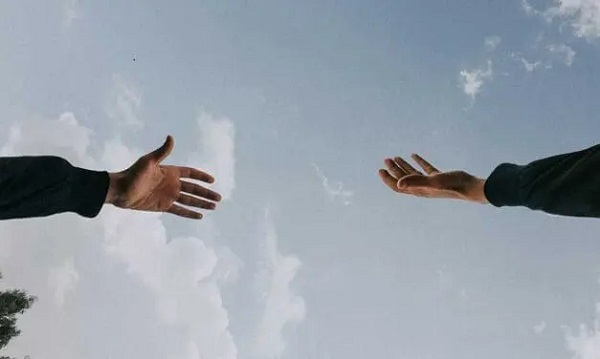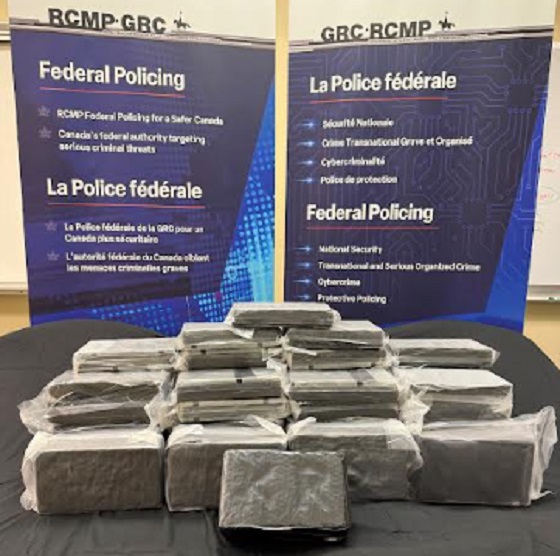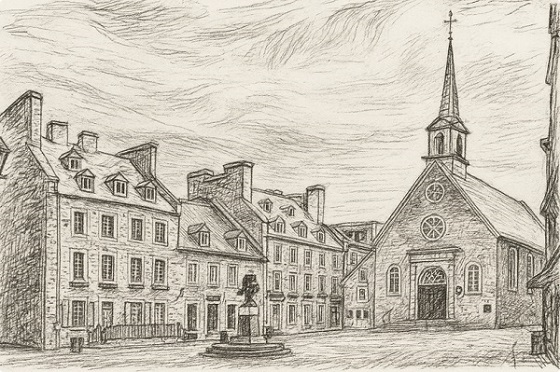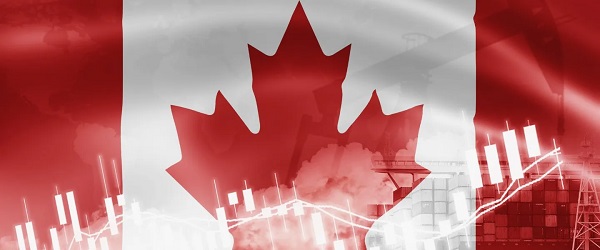National
“No public events scheduled”

|
|
The PM is on a national campaign tour. He lies about it every day.
Here’s Justin Trudeau at the Saldenah Mas Camp in Toronto on July 18. Volunteers spend months making costumes every year for the Toronto Caribbean Festival. It’s a fantastic tradition. My father, who lived in Barbados for a while, used to drive us up from Sarnia every year for the parade.
The prime minister’s public itinerary, which is emailed daily to members of the Parliamentary Press Gallery and posted on his website, said that on July 18 he’d be in Ottawa for the Change of Command ceremony. It acknowledged no other public event.
The itinerary usually goes out around 7 p.m. each night and lists the PM’s public activities for the next day. Then on the morning of the day, we get an itinerary that either repeats the night-before email, or modifies it. On July 15 the night-before itinerary said the prime minister would be in “Southwestern Ontario” and would have “no public events scheduled” the next day, July 16.
Here’s where it gets a little weird. I never received an itinerary for July 16 that said anything else. The itinerary that went out on the morning of July 16, like the night-before email on the 15th, said “no public events scheduled.” But on the PM’s website, the itinerary that’s there now lists a meeting with Kitchener mayor Barry Vrbanovic.
Later that day, Trudeau was in Scarborough at Junior Carnival. “You could just feel the energy in the air!”, the PM tweeted.
The first I learned of the PM’s meeting with Kitchener mayor Vrbanovic was when reporters received a pool report from a CP reporter, a couple of hours after the meeting ended.
Paul Wells is a reader-supported publication. To receive new posts and support my work, consider becoming a free or paid subscriber.
Pool reports have been used in many countries for many years. If there’s not room for every reporter or photographer who might want to attend, a smaller number are designated, on the understanding that they’ll share their observations and images with everyone who couldn’t go. It’s not great, because typically the pool reporter is not permitted to ask questions.
Sometimes journalists vote to determine who among them will be the pool. Sometimes it’s a Canadian Press reporter, by tradition and convention. In all recent cases with Trudeau, it’s been a CP reporter — because no other news organization except CP has been informed of these events.
There’s also a separate broadcast pool, in which all the broadcast networks participate. That way one camera goes to pooled events, and every network gets the images and audio.
The CP reporter’s account of the Vrbanovic meeting said Vrbanovic “thanked Trudeau for his government’s programs that provide funding to municipalities.” Trudeau “said he will discuss issues that matter to the region including housing and climate change with Vrbanovic.” At this point, “The pool reporter was then asked to leave the room.” I’ll bet she was.
So here’s what I’m here to write about today. This has become standard operating procedure for Justin Trudeau and his staff during the difficult summer of 2024: they claim in public every day that the the PM has “no public events scheduled.” Even though he is in a different city every day. And he has public events scheduled. In fact, he is in the city in question so he can attend the public events he claims aren’t on his schedule.
And a small number of journalists are told, every day, “for information purposes only” — i.e., on the condition that they not tell other journalists or the public — about the public events the PM has scheduled but is lying about.
On Monday Trudeau’s itinerary said he was in “Northern Alberta” and had “no public events scheduled.” Later on Monday he was in Hinton, AB to “get a briefing on the status of the Jasper wildfire, as well as meet with the province’s premier and evacuees who fled the blaze.” I know this because it was in the CP report. “Trudeau did not speak with reporters while he was in Hinton,” the story adds.
I wrote about this on Notes, Substack’s fun short-form social-media platform. A reader responded (and here I paraphrase) that, well, maybe the PM wanted to do serious business in a crisis situation without having to dodge snarky questions from rude reporters. And, you know what? Fair enough.
Thank you for reading Paul Wells. This post is public so feel free to share it.
Share
But here’s the thing. I’ve covered a lot of political leaders in emergency settings. It’s perfectly routine for the advisory to say what a leader will do today, but to say a given event is “Closed to Media.” Or for reporters to be sequestered in a room, well away from the meeting between PM and premier, with time for questions only after the meeting ends.
What’s rarer — what I’d never actually seen before — is for a PM to fly to Alberta, for his staff to say he’s going to be in Alberta, but for them to claim he won’t be doing anything while he’s there.
Incidentally, the version of the PM’s itinerary for Monday that’s on his website now says he had a meeting with Danielle Smith and with emergency responders. This version was never sent to reporters, either before or after the meeting. Absurdly, the itinerary has also been corrected to put Hinton in “Central Alberta” instead of “Northern Alberta.”
A colleague at a large news organization who’s vocationally preoccupied with following politicians’ schedules tells me this has happened “multiple times” in recent weeks: the itinerary on the website gets updated after the fact, in ways that do not reflect what reporters were told in real time. This is the smallest possible routine coverup, for the smallest possible benefit, that I have ever seen.
Pretty soon, news organizations are going to have to start explaining why Justin Trudeau’s summer schedule is so surprising to us.
Here’s Justin Trudeau making a “surprise appearance” at Vancouver Pride on Sunday. Here’s the PM making a “surprise appearance” at Winnipeg’s Filipino Folklorama pavilion on Monday. I’m here to tell you, reporters were not informed of either event — except the ones who were given a quiet heads-up so there’d be cameras on hand. Although how can you be expected to believe me? The PM’s gaslighting website says he “will attend” Pride on Sunday. At least they haven’t rigged the Monday advisory so it retroactively lies about having told us he’d be at the Winnipeg event.
I suspect today’s post will create some buzz, so I want to be careful to say precisely what I mean to say. Politicians are under no obligation to tell anybody how they spend every minute of their day. (It’s worth noting, however, that the public agendas of leaders in other places are sometimes more detailed than in Ottawa: here’s Emmanuel Macron’s and Joe Biden’s agendas for today. The UK’s Keir Starmer seems less forthcoming.) And it’s routine for leaders’ teams to acknowledge calendar events while also emphasizing that the public and journalists can’t attend. What’s an innovation is this business of claiming the PM has nothing “public” on his schedule when he is, in fact, on tour to do public events for which he will seek tightly controlled media and social-media credit.
It’s become entertaining to learn, after the fact, what the hell has been going on. Last week the PM was on vacation in British Columbia. We receive daily itineraries during a vacation, with no public events scheduled, and I don’t begrudge anyone any vacation time. Then he was back in Ottawa for two days, and then he was back in the “Lower Mainland” of BC with “no public events scheduled.” That was Pride, as it turned out. I’m pretty sure that when the big guy was on an airplane for the second time in as many days, he knew why. Eventually so did we.
Since I’ve started making a fuss about this stuff on Notes, I think the PMO is starting to get nervous. Here’s the itinerary we were sent for today, Tuesday, at 7:03 a.m. EDT:
And here’s the updated itinerary we received at 2:33 p.m.
Thanks for the update! Unfortunately, every event in the updated itinerary occurred before the PMO sent it out. When covering your tracks, try not to be so terrible at it. Fortunately the pool report should be landing in my inbox any minute.
I asked Andrea Baillie, the Editor-in-Chief of the Canadian Press, for an explanation of the national newsgathering cooperative’s role in these activities. She replied:
“It’s long been part of CP’s mandate to be with prime ministers as they carry out their duties. Alongside major broadcasters, we provide ‘pool coverage.’ That means we gather details on what the PM said and did on behalf of all press gallery journalists, at events where there is limited space. Typically, the PMO provides embargoed information (i.e. times and locations) on the PM’s schedule on short notice so we can get there on time. The pool is bound by an agreement to use this information for planning purposes only until the events take place, at which point the CP reporter provides details on what they saw and heard in a note sent to all press gallery journalists.”
I want to be clear that I intend no criticism of CP, which has come in for some cheap shots from Pierre Poilievre and others. Reporters who are told of politicians’ activities ahead of time routinely keep this information to themselves, as I have done for politicians from many parties. Including, come to think of it, while covering elections in other countries. It’s the only way to reconcile coverage of an event with politicians’ preference for planning in secrecy. In particular, readers who are quick to dream up heroic scenarios for reporters to act as their proxy to sabotage politicians’ schemes — You should just refuse to cover it! You should just shout your questions until they’re forced to answer! — are typically less thrilled when reporters try that stuff against the politicians they like better.
But reporters are obviously getting played here. When the prime minister of Canada deploys half-way across the country, with his staff photographer and videographers; and then tells hundreds of journalists he’s got nothing planned for the next day or the day dawning; and smaller numbers of journalists already know that’s not true; and then the PM meets public officials or crowds of voters, speaks on public-policy issues, and sends out his own shop’s versions of those conversations and professionally curated images; and then (I can’t believe I’m writing this part) his staff sneaks into the website to cover their tracks ex post facto — well, this is a lake of bullshit so deep I can’t touch bottom, and at the very least, we should let you know it’s going on.
Now watch the commenters under this post line up, like iron filings in a magnetic field, to reveal their polarity.
People who hope the Liberals will win will be furious at me for nitpicking. THIS MAN IS DOING THE BUSINESS OF THE COUNTRY AND YOU JUST WANT TO TEAR HIM DOWN, they’ll say. YOU’RE NO BETTER THAN BOB FIFE. HE’S SMART TO KEEP YOU AWAY FROM SERIOUS WORK.
The ones who wanted him gone years ago will say, AH-HA. THE MAINSTREAM MEDIA IS PLOTTING WITH LIBERALS TO HIDE THE SATANIC PM. YOU HOWLED WHEN POILIEVRE DID FAR LESS, BUT NOW YOU’RE PLOTTING! PLOTTING! WITH YOUR LIBERAL PAYMASTERS.
What’s much rarer will be voters who would actively prefer, say, a Liberal government that doesn’t routinely lie about what its PM is doing. Let me tell you, I sure notice every time a supporter of the Liberals who claims to support the Liberals because they like honest reporting and evidence-based policy suddenly complains about the reporting and evidence that make their guy look bad.
As for Poilievre, I’ve written about his media manipulation at length and, I suspect, will again. These attitudes — good coverage good, bad coverage wicked and worth any artifice to avoid — are widespread and party-agnostic. But it’s worth pointing out that Poilievre now routinely sends out advance notice of his rallies, and has lately been setting aside a few minutes for brief sessions with individual reporters after such events. This one with a Sudbury reporter was chippy but informative; this one with The Gazette’s Aaron Derfel caught Poilievre in a relatively introspective mood.
Mostly I’m not surprised when any public figure avoids scrutiny. Journalistic scrutiny is so rare these days, for reasons I’ve written about at length, that nobody should be surprised when it draws an annoyed and defensive reaction from politicians who view any surprise as an attack. Or, indeed, from anybody at all. “Freedom of the press” loses friends quickly in almost any concrete case.
But again, I’ve never seen this before, a Prime Minister of Canada who demands that his staff enable him as he claims to be taking the summer off even as he’s campaigning for re-election. One more irony: If you’re paying half the salary of most Canadian journalists, even while you’re sending emails to them full of lies about your schedule, you’ve made destroying their credibility a very expensive object of government policy.
Finally, what does all this tell us about the year Justin Trudeau’s having?
I’m not Catholic, but I view this extended fibbing campaign as a venial rather than a mortal sin. It’s mostly kind of baffling.
But it has precedent. In his memoir, Trudeau recollects the times he introduced himself as “Jason Tremblay” or as “Justin St-Clair” as a student or a young adult, to avoid being judged before he could make his case. He learned early how much of himself he wanted others to see.
What’s harder to discern is the point of the artifice. Trudeau gave an extended interview to the CBC days before the disastrous Toronto—St. Paul’s byelection. Within days after the returns from St. Paul’s were in, he adopted this duck-and-cover routine. To what end? Does he seriously hope to pick up 15 points of polling deficit by pushing out Instagram photos of parade floats? Does he think he can keep this up for a year until an election?
While we wait to find out, if I were on the PM’s communications staff and I had pre-existing plans to be working somewhere else in a year, this would be an excellent week to resign, because this week you’d get to do it on principle.
I hear the PM will be in St. John’s tomorrow. Tonight we’ll see whether it’s on the itinerary. For the full experience, subscribe to Paul Wells.
For the full experience, subscribe to Paul Wells.
Business
Bank of Canada governor warns citizens to anticipate lower standard of living

From LifeSiteNews
“Unless something changes, our incomes will be lower than they otherwise would be.”
Bank of Canada Governor Tiff Macklem gave a grim assessment of the state of the economy, essentially telling Canadians that they should accept a “lower” standard of living.
In an update on Wednesday in which he also lowered Canada’s interest rate to 2.25 percent, Macklem gave the bleak news, which no doubt will hit Canadian families hard.
“What’s most concerning is, unless we change some other things, our standard of living as a country, as Canadians, is going to be lower than it otherwise would have been,” Macklem told reporters.
“Unless something changes, our incomes will be lower than they otherwise would be.”
Macklem said what Canada is going through “is not just a cyclical downturn.”
Asked what he meant by a “cyclical downturn,” Macklem blamed what he said were protectionist measures the United States has put in place such as tariffs, which have made everything more expensive.
“Part of it is structural,” he said, adding, “The U.S. has swerved towards protectionism.”
“It is harder to do business with the United States. That has destroyed some of the capacity in this country. It’s also adding costs.”
Macklem stopped short of saying out loud that a recession is all but inevitable but did say growth is “pretty close to zero” at the moment.
While some U.S. protectionist measures put in place by President Donald Trump have impacted Canada, the reality is that since the Liberals took power in 2015, first under former Prime Minister Justin Trudeau and now under Mark Carney, government spending has been out of control, according to experts. Rising inflation is rampant.
Canadian taxpayers are already dealing with high inflation and high taxes, in part due to the Liberal government overspending and excessive money printing, and even admitting that giving money to Ukraine comes at the “taxpayers’” expense.
As reported by LifeSiteNews, Carney boldly proclaimed earlier this week that his Liberal government’s upcoming 2025 budget will include millions more in taxpayer money for “SLGBTQI+ communities” and “gender” equality and “pride” safety.
As reported by LifeSiteNews, the Canadian Taxpayers Federation (CTF) recently blasted the Carney government for spending $13 million on promotional merchandise such as “climate change card games,” “laser pens and flying saucers,” and “Bamboo toothbrushes” since 2022.
Canadians pay some of the highest income and other taxes in the world. As reported by LifeSiteNews, Canadian families spend, on average, 42 percent of their income on taxes, more than food and shelter costs. Inflation in Canada is at a high not seen in decades.
Business
Canada’s economic performance cratered after Ottawa pivoted to the ‘green’ economy

From the Fraser Institute
By Jason Clemens and Jake Fuss
There are ostensibly two approaches to economic growth from a government policy perspective. The first is to create the best environment possible for entrepreneurs, business owners and investors by ensuring effective government that only does what’s needed, maintains competitive taxes and reasonable regulations. It doesn’t try to pick winners and losers but rather introduces policies to create a positive environment for all businesses to succeed.
The alternative is for the government to take an active role in picking winners and losers through taxes, spending and regulations. The idea here is that a government can promote certain companies and industries (as part of a larger “industrial policy”) better than allowing the market—that is, individual entrepreneurs, businesses and investors—to make those decisions.
It’s never purely one or the other but governments tend to generally favour one approach. The Trudeau era represented a marked break from the consensus that existed for more than two decades prior. Trudeau’s Ottawa introduced a series of tax measures, spending initiatives and regulations to actively constrain the traditional energy sector while promoting what the government termed the “green” economy.
The scope and cost of the policies introduced to actively pick winners and losers is hard to imagine given its breadth. Direct spending on the “green” economy by the federal government increased from $600 million the year before Trudeau took office (2014/15) to $23.0 billion last year (2024/25).
Ottawa introduced regulations to make it harder to build traditional energy projects (Bill C-69), banned tankers carrying Canadian oil from the northwest coast of British Columbia (Bill C-48), proposed an emissions cap on the oil and gas sector, cancelled pipeline developments, mandated almost all new vehicles sold in Canada to be zero-emission by 2035, imposed new homebuilding regulations for energy efficiency, changed fuel standards, and the list goes on and on.
Despite the mountain of federal spending and regulations, which were augmented by additional spending and regulations by various provincial governments, the Canadian economy has not been transformed over the last decade, but we have suffered marked economic costs.
Consider the share of the total economy in 2014 linked with the “green” sector, a term used by Statistics Canada in its measurement of economic output, was 3.1 per cent. In 2023, the green economy represented 3.6 per cent of the Canadian economy, not even a full one-percentage point increase despite the spending and regulating.
And Ottawa’s initiatives did not deliver the green jobs promised. From 2014 to 2023, only 68,000 jobs were created in the entire green sector, and the sector now represents less than 2 per cent of total employment.
Canada’s economic performance cratered in line with this new approach to economic growth. Simply put, rather than delivering the promised prosperity, it delivered economic stagnation. Consider that Canadian living standards, as measured by per-person GDP, were lower as of the second quarter of 2025 compared to six years ago. In other words, we’re poorer today than we were six years ago. In contrast, U.S. per-person GDP grew by 11.0 per cent during the same period.
Median wages (midpoint where half of individuals earn more, and half earn less) in every Canadian province are now lower than comparable median wages in every U.S. state. Read that again—our richest provinces now have lower median wages than the poorest U.S. states.
A significant part of the explanation for Canada’s poor performance is the collapse of private business investment. Simply put, businesses didn’t invest much in Canada, particularly when compared to the United States, and this was all pre-Trump tariffs. Canada’s fundamentals and the general business environment were simply not conducive to private-sector investment.
These results stand in stark contrast to the prosperity enjoyed by Canadians during the Chrétien to Harper years when the focus wasn’t on Ottawa picking winners and losers but rather trying to establish the most competitive environment possible to attract and retain entrepreneurs, businesses, investors and high-skilled professionals. The policies that dominated this period are the antithesis of those in place now: balanced budgets, smaller but more effective government spending, lower and competitive taxes, and smart regulations.
As the Carney government prepares to present its first budget to the Canadian people, many questions remain about whether there will be a genuine break from the policies of the Trudeau government or whether it will simply be the same old same old but dressed up in new language and fancy terms. History clearly tells us that when governments try to pick winners and losers, the strategy doesn’t lead to prosperity but rather stagnation. Let’s all hope our new prime minister knows his history and has learned its lessons.
-

 Alberta16 hours ago
Alberta16 hours agoFrom Underdog to Top Broodmare
-

 International1 day ago
International1 day agoPrince Andrew banished from the British monarchy
-

 Business1 day ago
Business1 day ago“We have a deal”: Trump, Xi strike breakthrough on trade and fentanyl
-

 Business2 days ago
Business2 days agoCanada’s attack on religious charities makes no fiscal sense
-

 Alberta1 day ago
Alberta1 day agoProvince orders School Boards to gather data on class sizes and complexity by Nov 24
-

 Bruce Dowbiggin2 days ago
Bruce Dowbiggin2 days agoGet Ready: Your House May Not Be Yours Much Longer
-

 Crime1 day ago
Crime1 day agoCanada Seizes 4,300 Litres of Chinese Drug Precursors Amid Trump’s Tariff Pressure Over Fentanyl Flows
-

 National1 day ago
National1 day agoWatchdog Presses Ottawa to Release Hidden Lobbying Rulings














